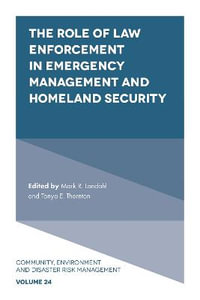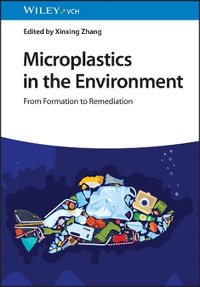| Introduction | |
| Occurrence and Remediation Strategies | p. 1 |
| Heavy Metals | p. 2 |
| Precious Metals | p. 4 |
| Strategies for Obtaining Metal Ion Recognition | p. 5 |
| Phase Transfer Extraction and Adsorption Methods | |
| Introduction | p. 9 |
| Liquid-Liquid Systems | p. 11 |
| Equilibria | p. 11 |
| Surfactants | p. 12 |
| Ion Hydration | p. 12 |
| Aqueous Biphasic Systems | p. 15 |
| Liquid Membranes | p. 16 |
| Picrate Method of Analysis | p. 19 |
| Adsorption Methods | p. 20 |
| Ion Exchange Methods | p. 20 |
| Adsorbent and Membrane Methods | p. 23 |
| Polymer Filtration Methods | p. 24 |
| Uncharged Solid Phase Adsorbent Materials | p. 25 |
| Silicates and Zeolites | p. 28 |
| Polymers and Biopolymers | p. 29 |
| Soil Washing Methods and In Situ Stabilization Methods | |
| Introduction | p. 35 |
| Soil Washing and Flooding | p. 36 |
| Soil Washing | p. 37 |
| In Situ Stabilization | p. 39 |
| Analytical Techniques | p. 41 |
| Extraction from Soils | p. 43 |
| Complexant Design for Soil Extraction | p. 44 |
| Electrokinetic Extraction of Metals from Soils | |
| Introduction | p. 47 |
| Electrokinetic Extraction | p. 47 |
| Electrokinetic Transport Model | p. 50 |
| Experimental Method | p. 52 |
| Electrokinetic Extraction of Copper, Lead, Cadmium, and Mercury | p. 54 |
| Electrokinetic Extraction of Uranium and the Other Radionuclides | p. 57 |
| Electrokinetic Extraction of Chromium | p. 58 |
| Selective Extraction with Chelates, Macrocycles, and Calixarenes | |
| Introduction | p. 63 |
| Multidentate Ligands | p. 65 |
| Dithio- and Diselenocarbamates | p. 66 |
| Aminopolycarboxylic Acids, Amides, and Aminimides | p. 68 |
| Oximes and Hydroxyaromatic Derivatives | p. 72 |
| Others | p. 75 |
| Extractants for Supercritical Carbon Dioxide | p. 80 |
| Macrocyclic Ligands | p. 81 |
| Oxygen Macrocycles | p. 82 |
| Azamacrocycles and Thiamacrocycles | p. 84 |
| Calixarenes | p. 95 |
| Limitations of Chelate, Macrocycle, and Calixarene Extractants | p. 100 |
| Phase Transfer Extraction of Mercury | |
| Background | p. 105 |
| Toxicity and Occurrence | p. 106 |
| Complexants | p. 107 |
| Oxygen Donors | p. 108 |
| Nitrogen Donors | p. 109 |
| Sulfur Donors | p. 109 |
| Chelates and Multidentates | p. 109 |
| Sulfur and Nitrogen Donor Chelates | p. 110 |
| Extraction and Detection Techniques | p. 113 |
| Column Materials for Mercury Separation | p. 114 |
| Organic Adsorbents | p. 115 |
| Inorganic Adsorbents | p. 115 |
| Macrocycles and Open Chain Analogs | p. 116 |
| Open Chain Analogs | p. 116 |
| N-Donor Macrocycles | p. 117 |
| S-Donor Macrocycles | p. 117 |
| O-Donor Macrocycles | p. 118 |
| N, O-Donor Macrocycles | p. 119 |
| Chromogenic and Fluorogenic Macrocycles | p. 121 |
| Porphyrins | p. 121 |
| Calixarenes | p. 122 |
| P and S-Donor Calixarenes | p. 122 |
| N-Donor Calixarenes | p. 124 |
| Elemental Mercury | p. 125 |
| Phase Transfer Extraction of Lead and Cadmium | |
| Lead | p. 129 |
| Toxicity and Occurrence | p. 129 |
| Complexants | p. 130 |
| Chelates and Macrocycles | p. 133 |
| Macrocycles | p. 139 |
| Calixarenes | p. 145 |
| Liquid Carbon Dioxide as the Non-Aqueous Phase | p. 146 |
| Biological | p. 148 |
| Ingestion from Paper | p. 148 |
| Analytical Methods for Lead | p. 148 |
| Cadmium | p. 151 |
| Toxicity and Occurrence | p. 151 |
| Chelates and Macrocycles | p. 152 |
| Sulfur Donors | p. 154 |
| Cyclodextrins and Carbohydrates | p. 157 |
| Cadmium Incorporation into the Food Chain | p. 158 |
| Phase Transfer Extraction of Copper, Silver and Gold | |
| Copper | p. 164 |
| Monodentate Ligands | p. 164 |
| Chelate Ligands | p. 166 |
| Macrocycles and Calixarenes | p. 175 |
| Calixarenes | p. 177 |
| Porphyrins | p. 177 |
| Carbon Dioxide | p. 177 |
| Others | p. 178 |
| Silver and Gold | p. 179 |
| Monodentates | p. 179 |
| Chelates | p. 181 |
| Macrocycles | p. 184 |
| Calixarenes | p. 187 |
| Extraction of Actinides and Lanthanides | |
| Actinides | p. 193 |
| Introduction | p. 193 |
| Monodentates | p. 193 |
| Multidentates | p. 197 |
| Lanthanides | p. 206 |
| Monodentates | p. 207 |
| Extraction of Anions and Oxyanions | |
| Introduction | p. 231 |
| Toxicological Effects | p. 233 |
| Analytical Techniques | p. 234 |
| Extraction Methods | p. 234 |
| Complexant Design | p. 237 |
| Acyclic Ligating Sites | p. 237 |
| Amines | p. 238 |
| Calixarenes | p. 240 |
| Poly(ethylene glycol) | p. 243 |
| Extraction from Soils | p. 243 |
| Extraction of Alkali and Alkaline Earth Metals | |
| Introduction | p. 247 |
| Crown Ethers | p. 248 |
| Crown and Bis-Crowns | p. 248 |
| Capped Cleft Molecules | p. 253 |
| Biphasic Media | p. 254 |
| Transport Phenomena | p. 255 |
| Carboxylate Crowns | p. 261 |
| Phosphonate Crowns | p. 261 |
| Lariat Crowns | p. 263 |
| Amino Crowns | p. 264 |
| Aza Crowns and Photocrowns | p. 266 |
| Specialty Crowns | p. 270 |
| Cavitands and Cryptands | p. 273 |
| Other Oxygen Donors | p. 276 |
| Metal Oxides | p. 279 |
| Physical Methods | p. 279 |
| Cesium | p. 281 |
| Phytoremediation and Bioremediation of Soils and Waters | |
| Introduction | p. 289 |
| Phytoremediation | p. 290 |
| Chromium (VI) | p. 292 |
| Cadmium, Lead, Copper, and Zinc | p. 293 |
| Mercury | p. 296 |
| Radionuclides | p. 296 |
| Bioremediation | p. 297 |
| Mercury | p. 298 |
| Cadmium, Copper, and Lead | p. 299 |
| Actinides | p. 300 |
| Chromium | p. 301 |
| Optical and Redox Sensors with Metal Ions | |
| Introduction | p. 307 |
| Optical Reporter Molecules | p. 308 |
| Redox Reporter Molecules | p. 310 |
| Chemiluminescence | p. 310 |
| Chelate Complexants | p. 311 |
| Nitrogen and Oxygen Donors | p. 311 |
| Conformational and Steric Effects | p. 316 |
| Sulfur Donors | p. 317 |
| Ruthenium Bipyridyl Complexes as Sensors | p. 319 |
| Calixarene Complexants | p. 320 |
| Optical Reporters on Calixarenes | p. 320 |
| Redox Reporters on Calixarenes | p. 326 |
| Lanthanide Reporters on Calixarenes | p. 326 |
| Macrocyclic Complexants | p. 327 |
| N, O, and S-Donors | p. 328 |
| Azamacrocycles | p. 332 |
| Cryptands | p. 334 |
| Porphyrins and Pyrroles | p. 336 |
| Crown Ethers and Cryptands for Alkali and Alkaline Earth Chemosensors | p. 338 |
| Naphthalene and Anthracene Reporters | p. 339 |
| Iron Sulfur Cluster Reporters | p. 344 |
| Structural Features | p. 344 |
| Sensors for Biological Applications | p. 345 |
| Sodium | p. 346 |
| Potassium | p. 347 |
| Calcium | p. 347 |
| Zinc | p. 349 |
| Lanthanides | p. 351 |
| Signal Transmission | p. 352 |
| Solid State Sensors | p. 353 |
| Sensors for Anions | p. 355 |
| Acyclic Ligating Sites | p. 355 |
| Calixarenes | p. 357 |
| Molecular Computation | p. 359 |
| Index | p. 365 |
| Table of Contents provided by Syndetics. All Rights Reserved. |

























